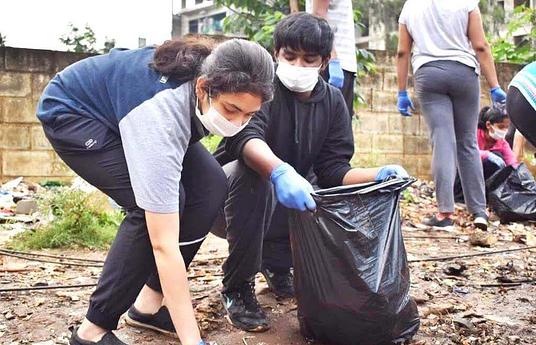Design for Changefirmlybelieves that all children have the ingredients to "be the change".
The vision of Design for Change is toensure, by design,thatall children grow with the“I can” mindset – the belief that they are not helpless, change is possible and they can drive it.
Every child has the right to express their views on matters that affectthemand to have those views considered. Education systems have an opportunity to develop each child’s personality and talents to the full, to encourage the child’s respect for human rights, their own and other cultures,and the environment. In short, children should be empowered to be active citizens, able to make a change in the world. Academic competence and character development are the two most valued outcomes, for both educators and the public, yet the prevalence of standardized testing shows that academic competence is increasingly prioritized, leaving a lack of opportunity for a child to develop their unique personality and talents and to have their voice heard.
Since 2009, Design for Change has empowered children to be active change-makers in their communities. The goal is to create a learning environment that balances academic attainment with character development, focusing on passion and compassion, content and character, doing well and doing good. Design for Change is completely decentralized – the ideas for projects will come from the schools and communities themselves. This means any school around the world can adopt the key principles and utilize the method to suit their unique context and particular needs.
The four-step Feel, Imagine, Do, Share process used by Design for Change leads students to understand situations empathetically, imagine creative solutions and work collaboratively to put those solutions into action. The approach builds employability skills, such as empathy, collaboration, leadership, presentation. Through taking control of their own learning, children are able to unlock skills they didn’t even know they had. A 28% increase in overall grades and 39% increase of performance in standardized testing have been evidenced. In addition to academic improvements, teachers see their students become empowered, and are able to shift their practice from teacher to facilitator, as children become the driving force in their own education.
Design for Change organizes an annual global conference, Be The Change, to allow young superheroes from across the world to showcase their stories of change and to inspire others with their determination and courage.
Design for Change has received much recognition for their work and have won 8 awards to date, including recently:
- 2023 – Riverside wins the World’s Best School Prize for Innovation from T4 Education
- Design For Change (DFC) movement (Silver Winner by Reimagine Education in 2020 under K12,
- Lego Reimagine Learning Award,2015;
- 1st place Commonwealth Education Good Practice Awards, 2015;
- INDEX Design to Improve Life Award, 2011) and continues to be in top 100 educational
- programs around the world recognised by HundrED.org.To
Please watch out event glimpses: https://youtu.be/6eWA0ZPbGIk
Here is some explainer videos on FIDS (FEEL, IMAGINE, DO, SHARE):
1. FEEL: https://youtu.be/XKEFMBF0QbA
2. IMAGINE: https://youtu.be/jxsPoy5Sm8A
3. DO: https://youtu.be/pEd90FlQypw
4. SHARE: https://youtu.be/jeGLsYsHyko



